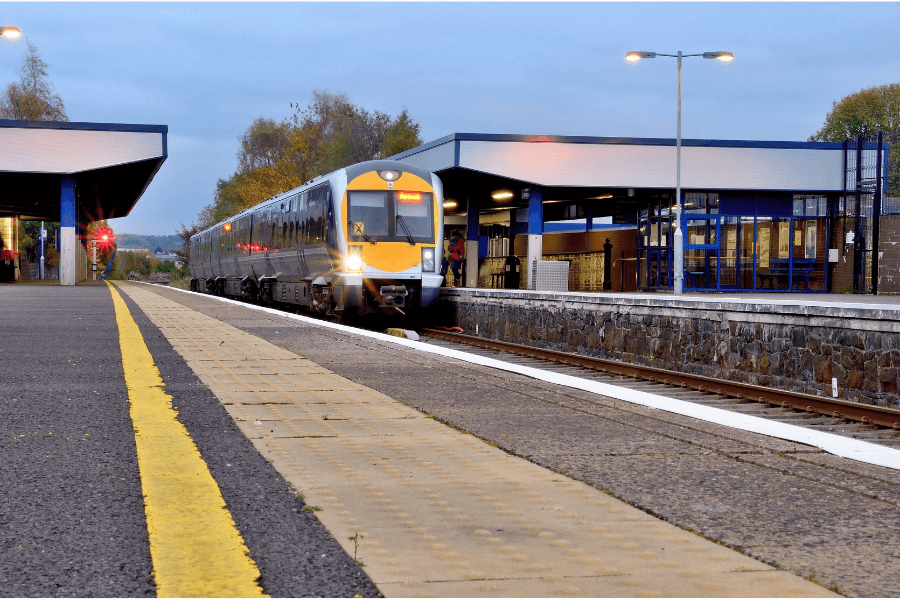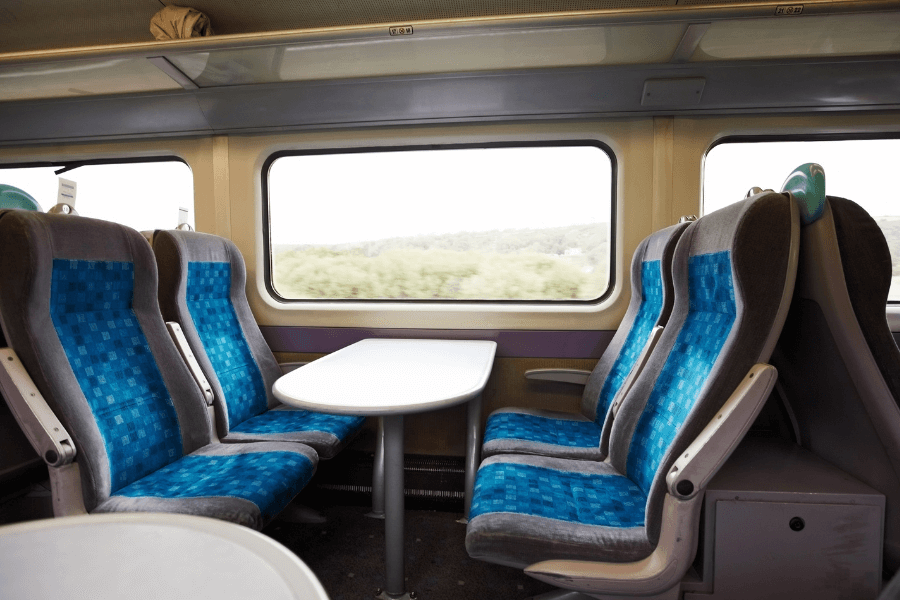
The UK Labour Government’s plan to renationalise train operating companies aims to gradually transition them to state control as contracts expire, but this move is more a continuation of existing trends than a radical shift.
Professor Donald Houston, Dr Magda Cepeda-Zorrilla and Dr Sara Hassan look at the core challenges facing British railways.
The UK Labour Government elected in July 2024 promised in its Manifesto to renationalise Britain’s train operating companies when their current contracts come to an end. But does this signal a new era of greater investment, improved services and cheaper fares? Or is it merely a case of rearranging the deckchairs on the Titanic?
The core issue facing British railways is not ownership but investment. Ownership comes with its ideological baggage, which can often obscure more pressing concerns. Whether the ownership is public or private it may not fundamentally alter the factors that matter most to passengers, such as reliability, pricing and level of service. Ownership alone doesn’t dictate how the system functions or how affordable it is to passengers.
For over three decades, rail passenger numbers in the UK have trended upward, leading to widespread issues like overcrowding, service frequency and reliability problems, especially in the North of England. Data from 2023 showed that punctuality and reliability (17.6%) and sufficient room for passengers to sit or stand (11.0%) were among the top complaints (Rail factsheet: 2023) from rail users. To address these concerns and boost regional economies, significant investment is required in rail capacity. This would not only help alleviate overcrowding but also encourage more people to opt for trains over cars, thereby contributing to sustainability goals.
The previous Labour Government laid the groundwork for significant rail projects, including High-Speed 2 (HS2). The increased capacity brought by HS2 is more important than the relatively modest number of minutes it takes off city-to-city (err… now only Birmingham to London) running times. Subsequent governments expanded upon the boldness of HS2, culminating in the Integrated Rail Plan for the North and Midlands (IRP) published in 2021. Despite some setbacks, including axing HS2 north of Birmingham, the IRP remains a critical step forward in addressing the long-term infrastructure needs of the UK’s rail network. However, the IRP is not enough on its own. Widespread investment on key east-west routes, larger and better trains, improved infrastructure and higher service frequencies are all urgently needed. Whether these are delivered by a public or private entity is less important than ensuring they are all delivered.

Labour’s plans to create Great British Railways giving it greater strategic oversight and reducing the financial risks faced by train operators, can be seen as a continuation of the former Conservative government’s proposals. This approach makes sense in terms of ensuring timely investment. However, the more significant shift in Labour’s plan is its intention to expand state control over more train operating companies as contracts expire, gradually transitioning them to state-backed companies without shareholders. While this might mark a change in ownership, it’s not likely to be a fundamental change in how the rail system operates.
The reality is that Labour’s renationalisation plans aren’t as radical or far-reaching as they may initially appear. Since the wholesale privatisation of British Rail in the mid-1990s, parts of the rail network, including track, signalling, and some train operating companies, have already been brought back into public ownership due to financial crises affecting those companies. The question now isn’t just about who owns the railways but about how much investment will be directed into the system and how efficiently it will be used.
The former state-owned British Rail (1948-96) was often unfairly characterised as inefficient, and lacking in innovation, with the infamous “British Rail sandwich” becoming a symbol of its perceived shortcomings. Yet this narrative overlooks significant innovations, such as the transition from steam to diesel and electric trains, the introduction of modern electronic signalling and the rationalisation of the network. British Rail was also responsible for considerable innovation, including pioneering tilting train technology and conceiving new services like overnight sleeper trains and the Motor Rail service, which carried both passengers and their cars. However, low government investment levels, operating deficits on most routes, and entrenched working practices limited British Rail’s potential.
Privatisation, rushed through between 1995 and 1997, fragmented the industry into companies responsible for different aspects of rail operations, including track, signalling, rolling stock and operating train services. This further division, coupled with short-term operating franchises hindered investment and innovation. Despite these challenges, rail passenger numbers increased in the years following privatisation, as did freight volumes (excluding coal). This was partly due to private investment and innovation but also the result of a period of strong economic growth, increased public funding for the rail industry and growing road congestion pushing more people toward rail.

Several private rail companies eventually ran into financial difficulties, leading to the state stepping in to take over key parts of the network. Track and signalling were brought back under public control in 2002, and infrastructure maintenance followed in 2004. The government also has twice had to take over the flagship East Coast Main Line due to financial and operational problems affecting operators, firstly between 2008 and 2015 and again from 2018 onwards. The COVID-19 pandemic exacerbated the fragility of the franchising system, forcing the UK Government to replace franchises with concession contracts which shifted commercial risk from operator to the state.
Labour’s plans to extend public ownership to more train operators aim to reduce the financial risks associated with private ownership, but they are not a radical departure from recent trends. Britain’s railways, whether publicly or privately owned, have long struggled with issues like underinvestment, profitability and operational efficiency. There have been examples of both success and failure in public and private hands, but the overarching lesson is that ownership alone does not guarantee success. What matters most is the investment, innovation and effective governance – issues that require attention regardless of whether the system is publicly or privately owned.
The direction of travel (pun intended) since privatisation under both Labour and Conservative Governments has been toward more public ownership and more regulation. Labour’s plan, therefore, is less of a radical shift and more of a continuation of this direction. If it stimulates investment and innovation, then rail users, and cities served by the rail network, will benefit. If it doesn’t, the system will continue to struggle.
What is needed now is a step change to make the rail network more appealing and affordable, if the UK is serious about achieving its economic, sustainability and Net Zero ambitions. Without significant improvements in capacity, pricing and service quality, nationalisation alone won’t be enough to meet the challenges ahead.
This blog was written by Professor Donald Houston, Professor of Regional Economic Development, Dr Sara Hassan, Research Fellow, City-REDI, and Dr Magda Cepeda-Zorrilla, Research Fellow, City-REDI, University of Birmingham.
Disclaimer:
The views expressed in this analysis post are those of the authors and not necessarily those of City-REDI / WMREDI or the University of Birmingham.
